The Future of Work: How AI-Powered Digital Workspaces Are Reshaping Productivity

For centuries, our real limit was the speed at which humans could share and coordinate ideas. Speech, writing, the printing press, radio, and the Internet each cut that cost – but all still relied on the reading and thinking speed of the human brain. Artificial intelligence finally breaks that ceiling. The next leap in productivity will come from intelligent workspace systems that work with people, not just for them.
Introduction: Why We Need a Collaborative AI Workplace
In our remote offices and collaborative workspaces, tool stacks have morphed into tool overload. For years, we piled on chat apps, whiteboards, Kanban boards, CRMs, CMSs, and other tools with no real backbone to hold them together. Many companies still rely on Slack or Microsoft Teams for chat, Jira or Trello for ticketing, Notion or Confluence for docs, and Zoom or Google Meet for calls – and God knows what else for accounting. Often, it's a spiderweb of connectors that glue every executive’s favorite app into a true “Frankensuite.” The cognitive tax is real: data sits in silos, decisions disappear in chat threads, and workflows stall whenever a single integration breaks.
Now AI is becoming a team member: a recent McKinsey survey shows that 65% of organizations already use generative AI in daily operations – almost double last year’s figure – clear proof that digital transformation is rocketing. Millions of autonomous agents are on their way into offices. These pals can process thousands of data points per second and retain far more context than any person. But do we have a collaborative space to spawn them into? The real task is blending them with human talent inside one cohesive digital workspace. Free us from reliance on countless third-party tools, and avoid having to teach them how to navigate apps built for human workflows.
That’s what will allow us to delegate routine work to AI agents, reclaim our time, and move toward a semi-cybernetic workforce.
Key Features of Human-Agentic Collaboration and Automation Tools
Contextual AI assistance
Ask, “What changed in Q2?” and a named AI agent fetches the numbers, drafts a summary, and explains key developments in plain language. Slack, which recently has started positioning itself as an “AI agent hub,” allows users to summon contextual agents in conversations just like tagging a human teammate. However, most of such functionality remains locked behind premium plans.
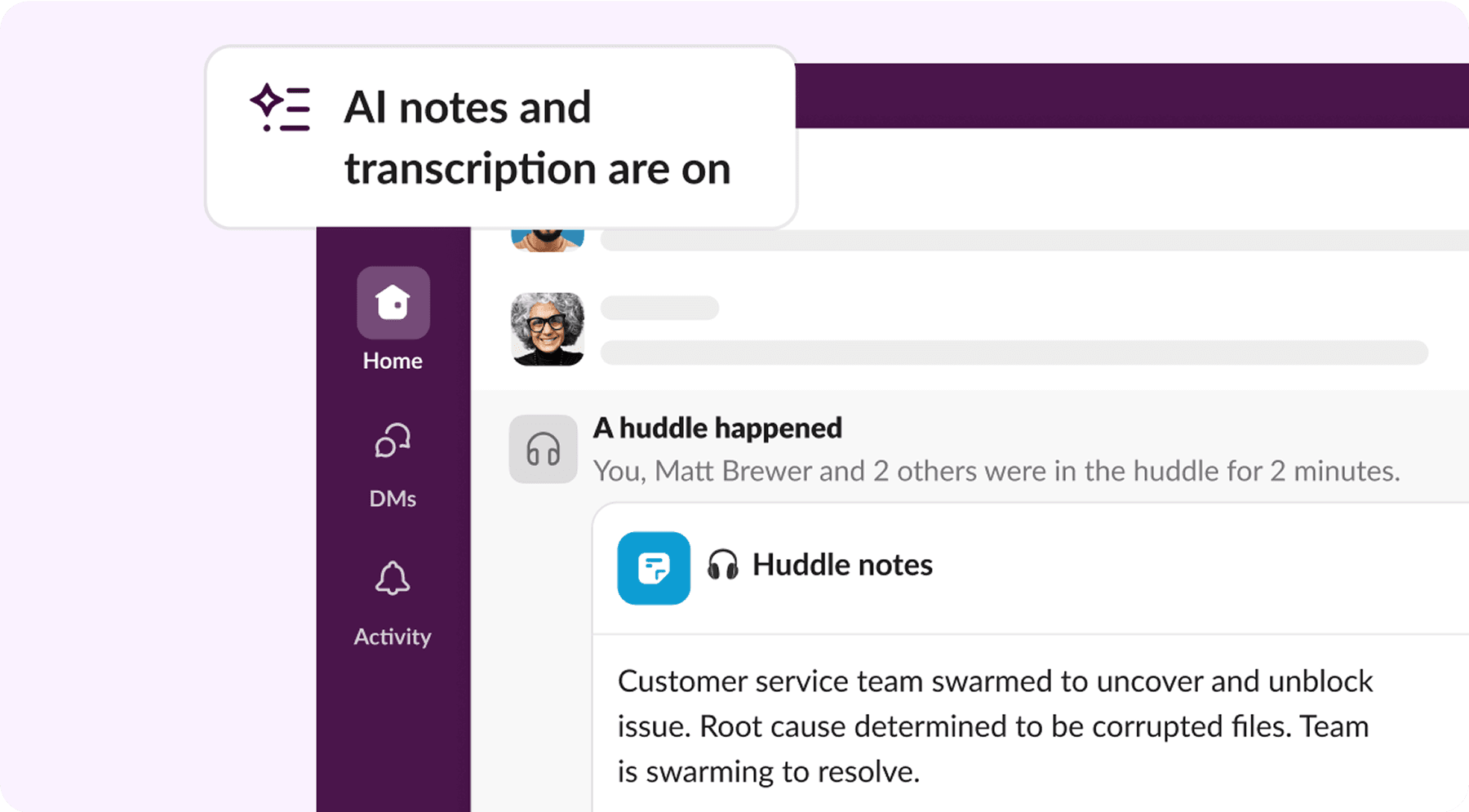
AI-first knowledge management
Smart content organization automatically tags, clusters, and ranks files by relevance – so that essential knowledge stays structured, accessible, and ready to use. Retrieval-augmented search surfaces the exact page, number, thread, chart, or video from petabytes of documentation. Microsoft 365’s “Researcher” tool is a strong early example: it can perform multi-step lookups, synthesize relevant documents, and draft structured output – streamlining the kind of research that used to consume hours.
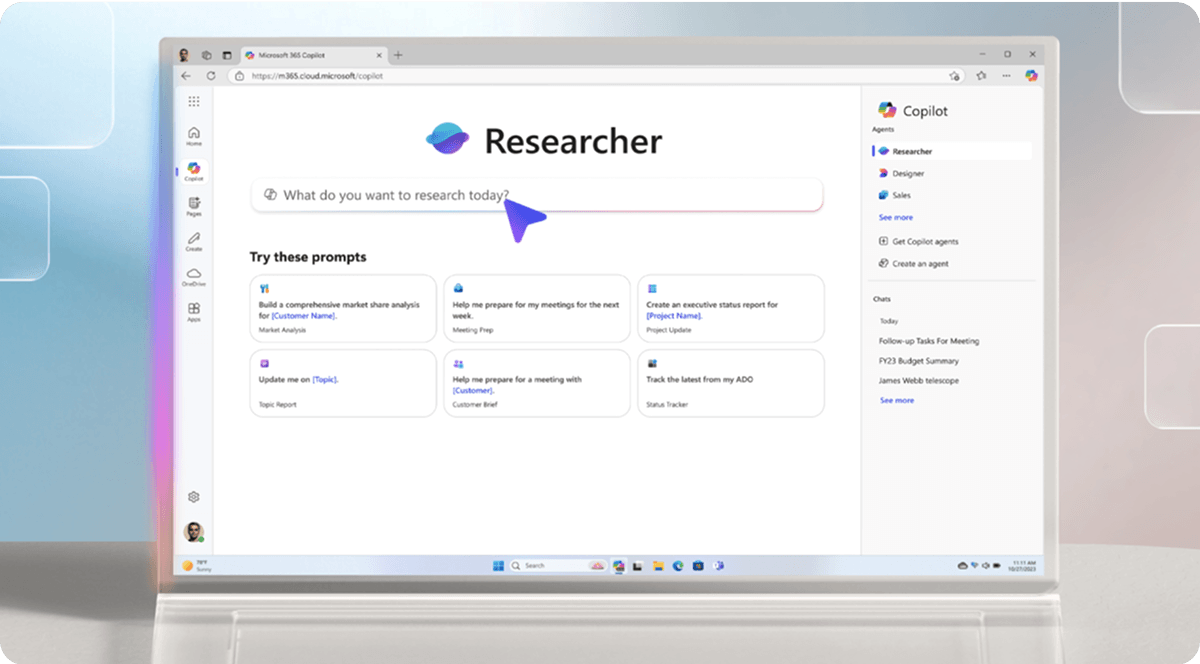
Intelligent task and project management
Next-generation task management systems dynamically assign work, predict bottlenecks, and possibly even reallocate resources before deadlines slip. Jira, for instance, is actively experimenting with auto-linking tickets and generating sprint summaries – bringing a taste of predictive task orchestration to traditional dev workflows.
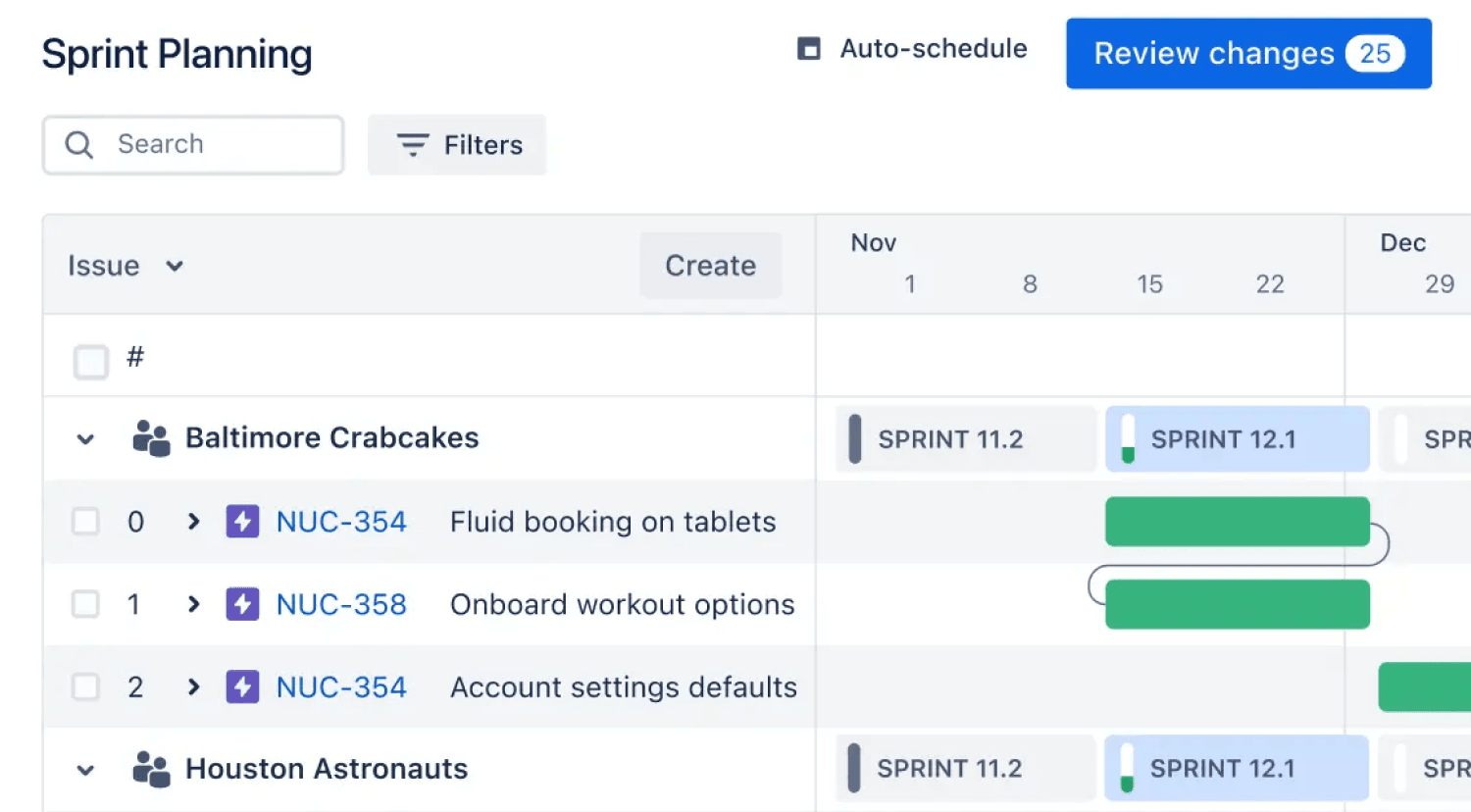
Multimodal processing
AI now handles voice, text, visuals, and code across any direction and combination. Meeting audio recordings are immediately converted into transcripts, summaries, and checklists (Zoom currently handles it with impressive accuracy). Messages can be transformed into graphics or tables into graphs. Among collaborative platforms, ClickUp offers similar features, capable of flashing voice meeting summaries into action items or follow-ups, keeping teams aligned in real time.
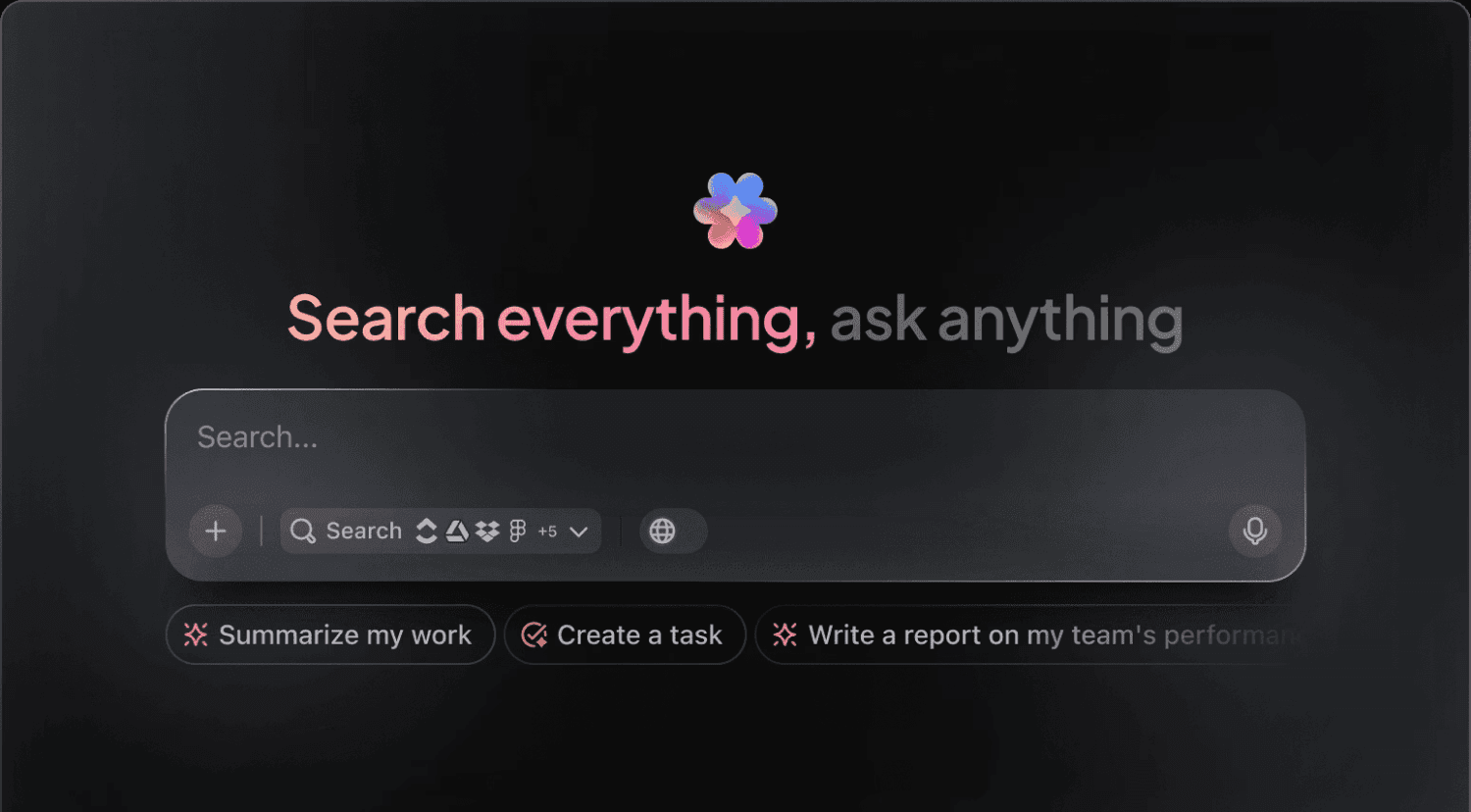
End-to-end workflow automation
Modern agentic systems use a single engine that stitches chat, tasks, and – most importantly – life data from databases across every module, eliminating manual integrations and unifying the entire stack into one intelligent workspace. Microsoft’s “Analyst” tools within its 365 suite already point in this direction, capable of drawing insights directly from operational data and embedding them into workflows. The most advanced solutions enable agents to act based on data.
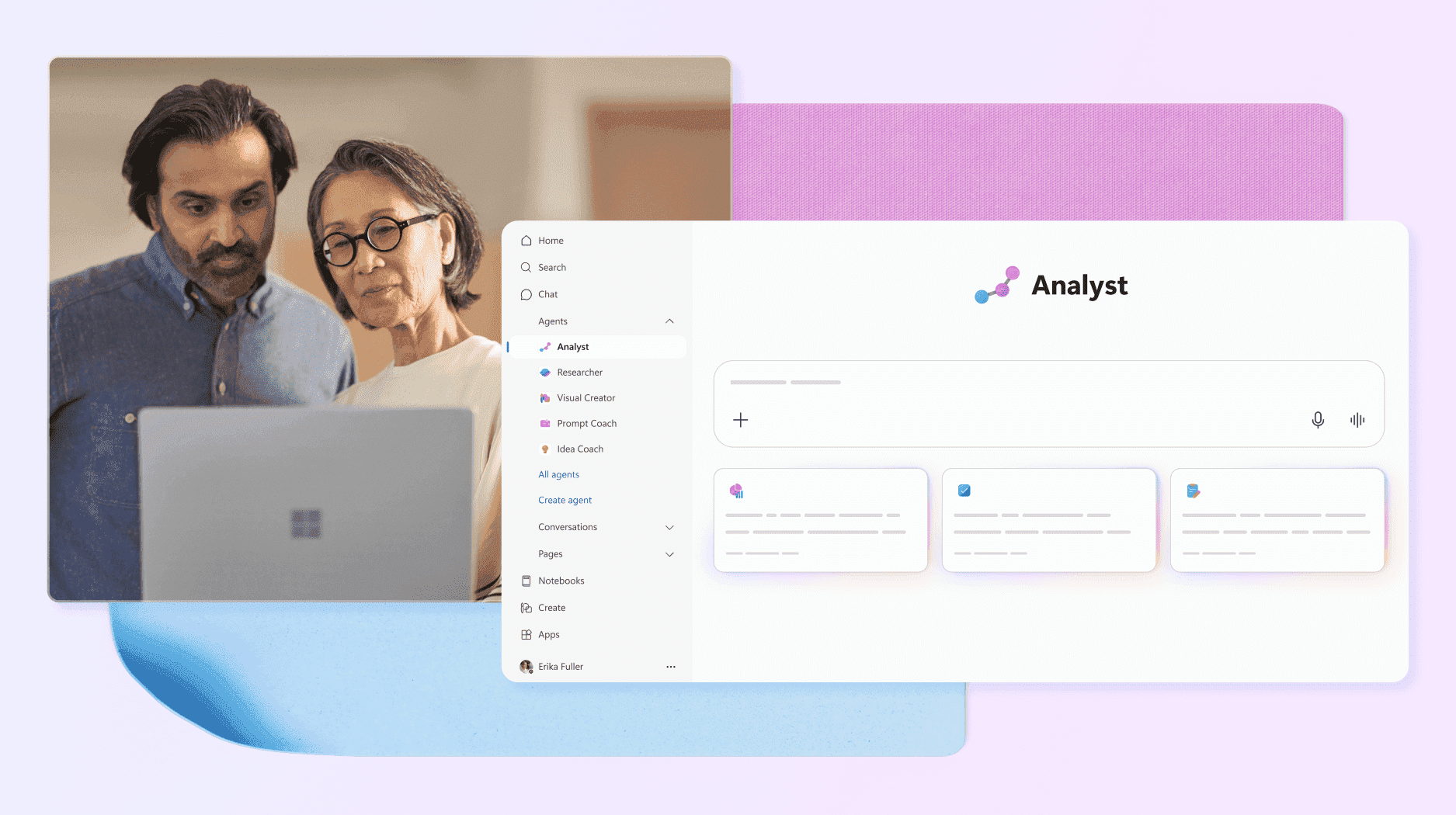
Guides and copilots
Always-on AI agents now act as navigators on the captain's deck. Workspace copilots surface the right commands, build features on demand, and guide users through complex processes. Microsoft currently promotes its own Copilot across the 365 ecosystem as just such a universal first mate.
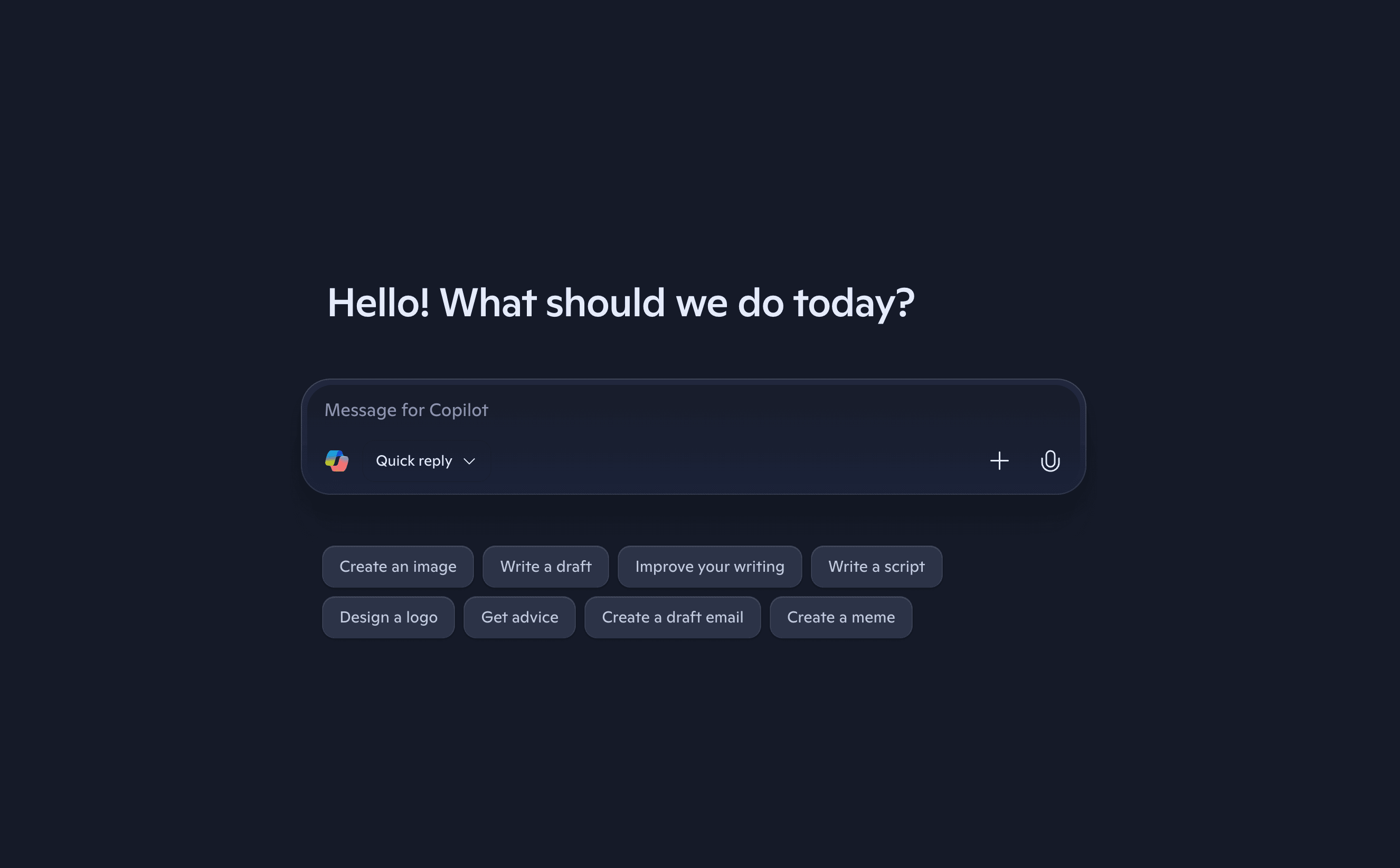
When all the mentioned human-AI collaborative features converge on a single backbone, coordination becomes cheaper – and productivity curves bend upward. Naturally, tech giants have already joined the race, though keeping agentic features locked behind overpriced plans. However, legacy tool suites that once boosted productivity now hinder teams, as vendors simply bolt generative AI onto them and leave collaboration scattered across multiple windows.
Bridge: A New Benchmark For Productivity
Meet Bridge: A distinctly new class of intelligent workspaces: a cross-functional, hybrid human-AI collaboration tool built to automate end-to-end workflows and make coordination between people and agents fast, unified, and cost-effective. The sections ahead unpack the core features that make it possible.
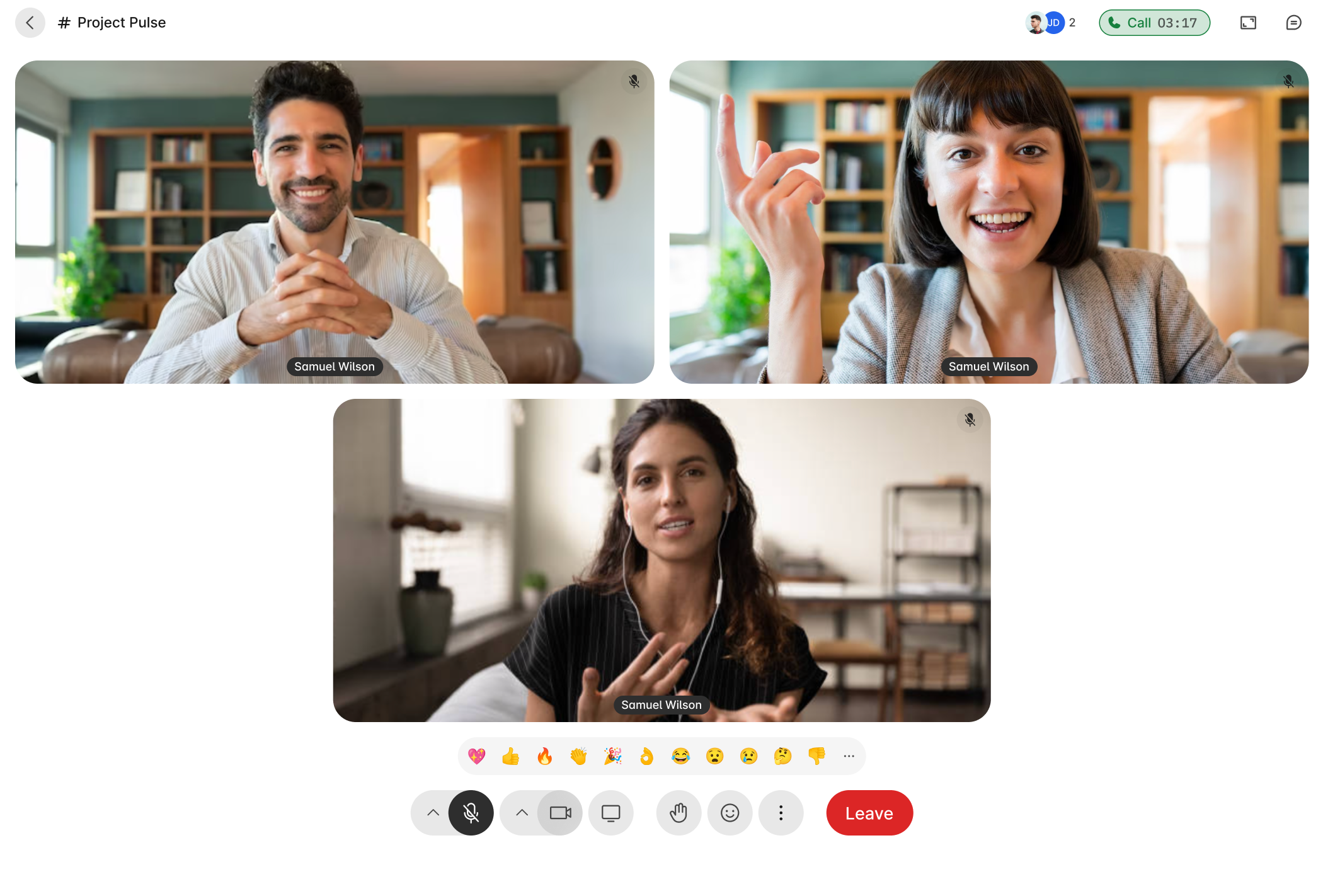
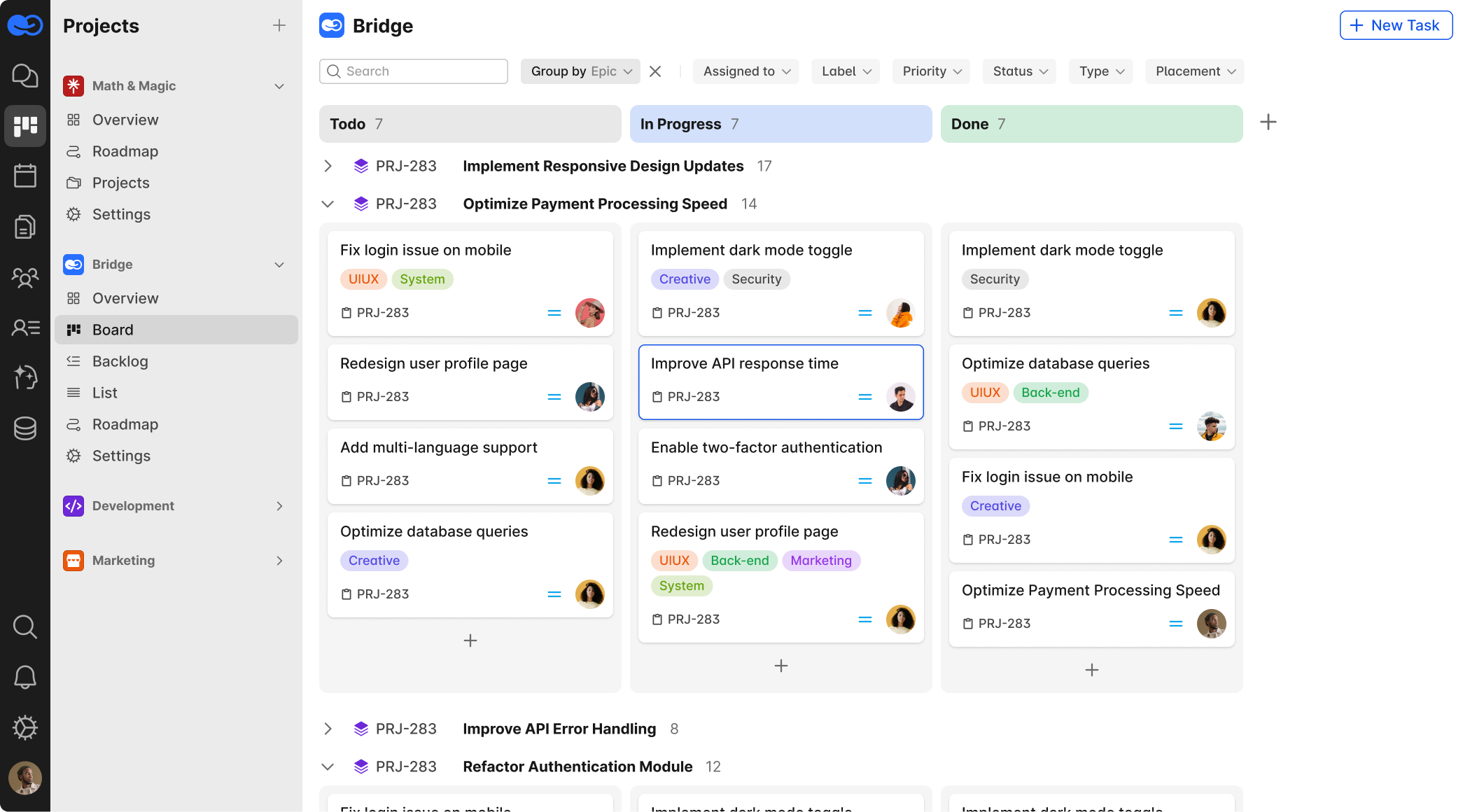
Bridge unifies everything teams need to operate: messaging, task tracking, docs, and databases – all built-in and sharing the same backbone. Both humans and AI agents work in this shared environment, with full access to the same tools and context – so there’s no need to juggle five disconnected platforms or stitch together third-party integrations. Agentic AI learns from every query, letting its intelligence grow with the business – gradually turning team discussions and backlogs into reusable task-handling patterns.
In short, AI can now handle the manager’s work, freeing real team collaboration to move faster than ever. AI agents can draft decks or emails, update database fields, or ping a colleague – human or machine – without manual hand-offs. LLMs under the hood explain, remember, and track how work flows.
Meet the AI Workforce
Here are some of the non-human employees already at work inside our clients’ digital workspaces:
| AI Agent | What It Does |
|---|---|
| Scrum Assistant | Summarizes daily reports, and helps split goals into actionable subtasks |
| Client Success Tracker | Works with customer database, flags stalled pipeline activity, drafts follow-up emails to keep prospects engaged |
| Legal & Compliance Bot | Generates NDAs/LOIs, reviews incoming PDFs, chases KYC docs |
| Brand Guardian | Checks copy and visuals for tone-of-voice and style compliance |
| Support Buddy | Answers FAQs, updates help articles, routes social posts with sentiment tags |
| Pulse Monitor | Welcomes new hires, grants access, teaches house rules |
| Onboarder | Captures crash reports, logs backups, pings devs with context |
| Incident Watcher | Captures crash reports, logs backups, pings devs with context |
| Code Scribe | Takes nightly repo snapshots, signs changes, drafts release notes |
| KPI Desk | Turns raw metrics into charts & takeaways, posts on schedule |
Preliminary client data – still too limited for definitive claims – already points to substantial time savings. Routine work is down across the board, though the exact gains vary by team size and workflow. Early snapshots show that some AI agents cut document-turnaround time by 70–80 %, freeing junior staff from dozens of hours of paperwork each month. Automated onboarding shrinks ramp-up from ten days to just two or three, while tighter workflow oversight is nudging both process reliability and conversion rates upward. Just as crucial, agents reclaim the hard-to-measure minutes once lost to hunting for past decisions or stitching together unfinished tasks – time that never shows up on a timesheet but quietly stalls momentum.
“The system feels like a whole bunch of new departments – colleagues who never sleep and are always aware of the context.” – 50-year-old CTO Marco, who leads a 60-person Web3 firm building blockchain solutions for the finance sector and was among the first to deploy Bridge. Some teams report genuine excitement and a clear productivity lift after their case-handling staff went hybrid.
We’ve heard from clients that project cycles move faster – and they can’t believe how streamlined their toolset feels. Most say they dropped half a dozen apps without even noticing.
The Bridge Advantage – Tomorrow’s Digital Workspace
Unified Canvas – erases context-switching inside a single virtual workspace where chat, tasks, and documents share one data backbone. Chats, Kanban boards, living docs, and critical databases all breathe through the same data backbone, tended by both humans and AI agents that can be invoked from any corner of the workspace, so work never slips between the tabs.
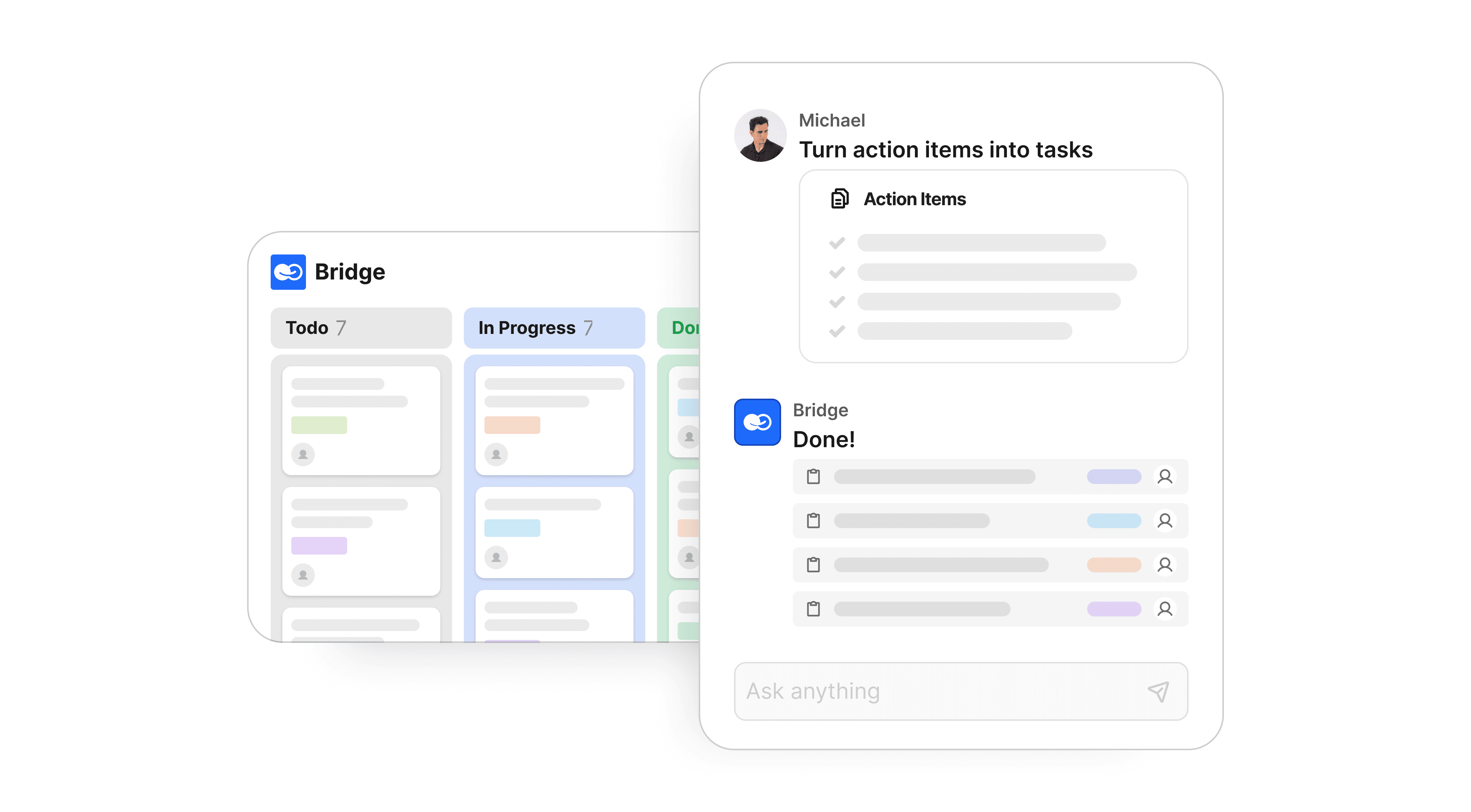
Agent Graphs – let you sketch their intelligence. Boxes and lines morph into the cogs and gears of an AI brain: drag-and-drop blocks with fields for system prompts, variables, database calls, allowed communication channels, LLM APIs, and token budgets bloom into full-fledged AI teammates that listen, reason, and act – no code required.
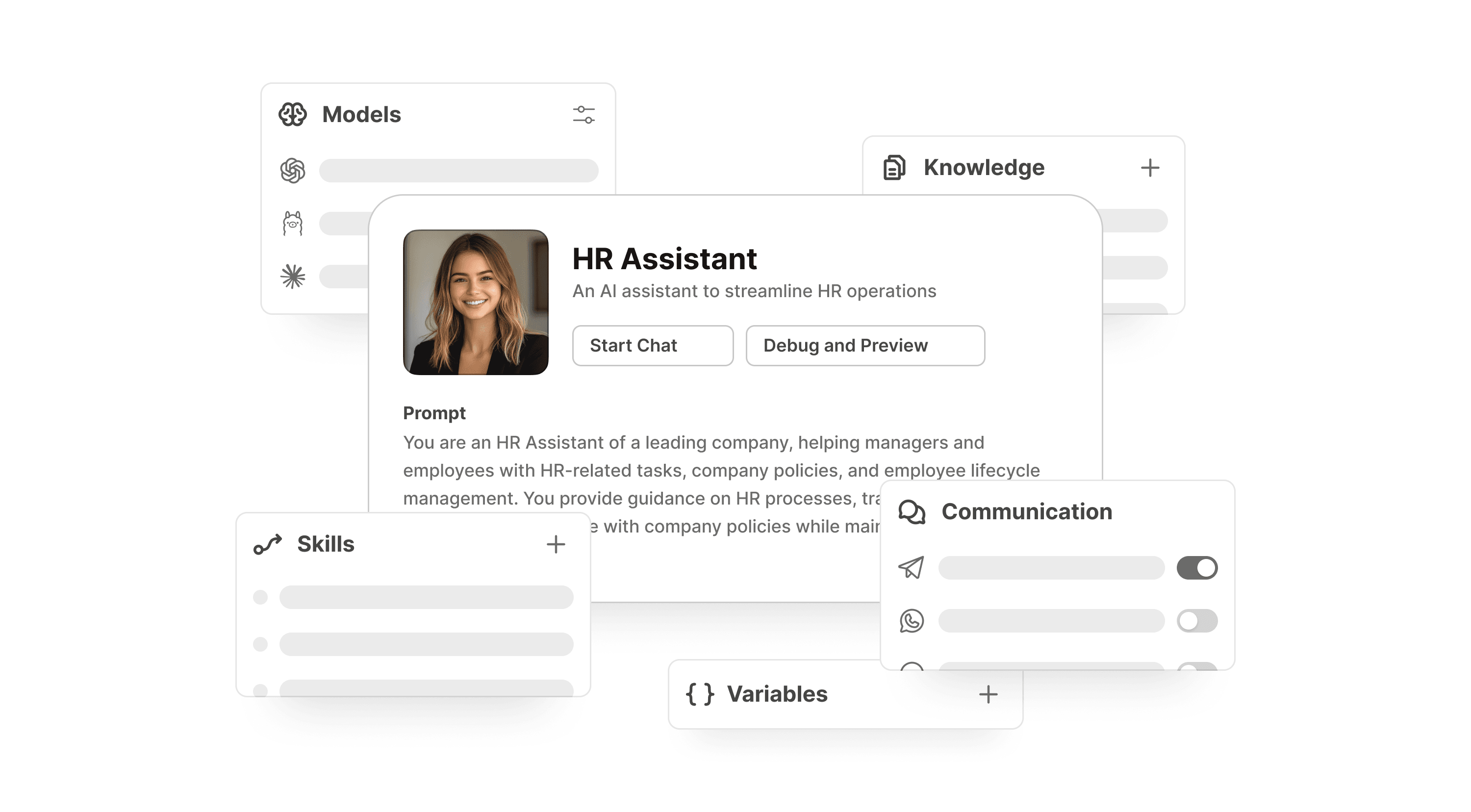
Copilot – summons insight on cue. It’s the digital aide you’ve always wanted—think Harry’s Dobby, Holmes’s Watson, or Wooster’s Jeeves. Ask a question and it fetches the answer—or spins up a brand-new agent to serve you. Spot on.
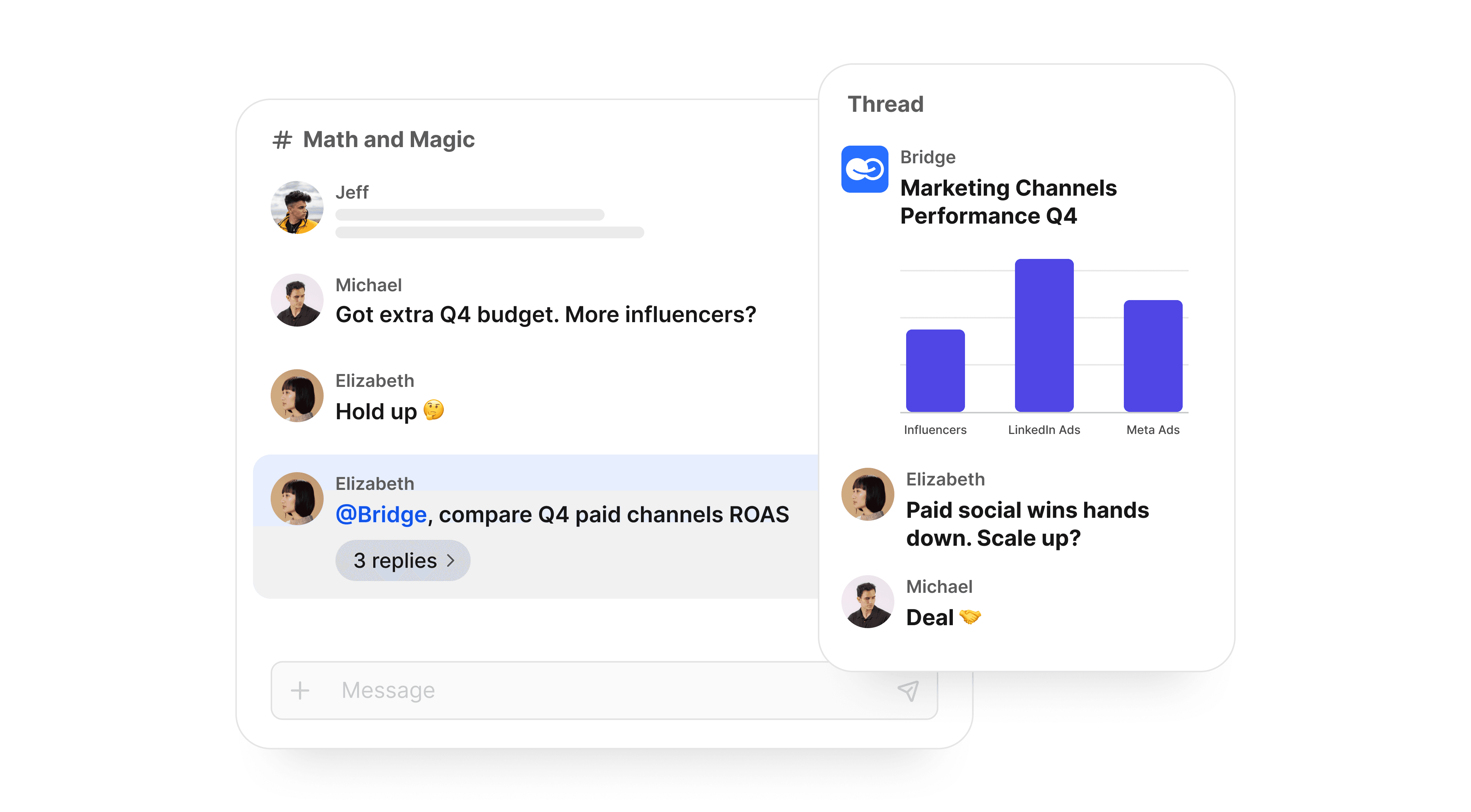
Flexible Deployment – fits your guardrails. Launch in our SaaS cloud for speed or park the whole stack on-prem for full data sovereignty – no compromises.

Transparent Pricing – Bridge keeps budgets calm. On the free plan, you only pay for AI tokens and data storage above 5 GB per organization. When you're ready to scale, the Pro tier adds advanced features at just 9 EUR per seat – with no hidden fees or surprise charges.
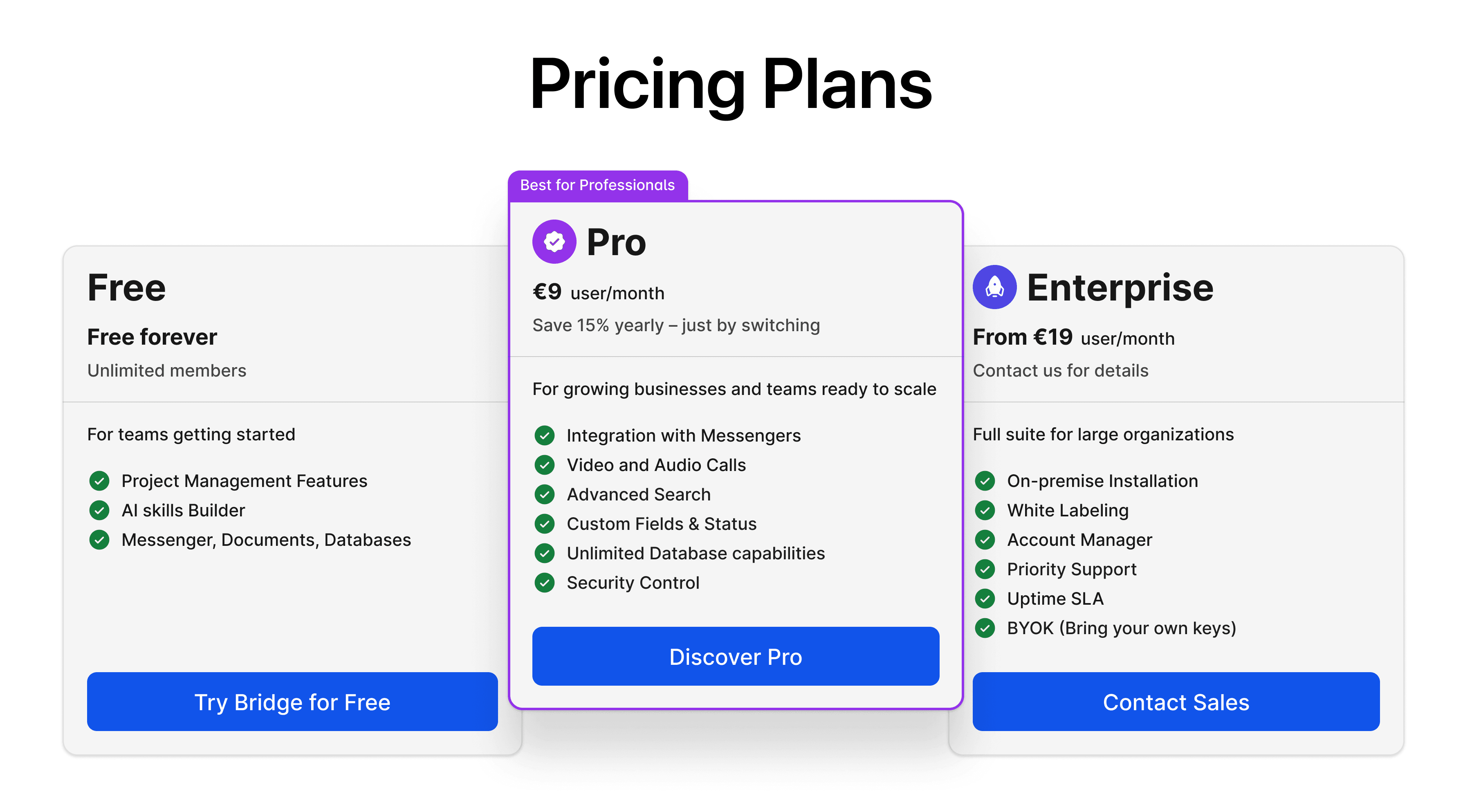
Implementation Roadmap — Rolling Out Bridge collaborative AI workplace Across Your Organization
- Choose Your Deployment – spin up Bridge in the cloud or on-premises, so your remote team can collaborate securely under one system – with full data sovereignty.
- Form a Pioneer Squad – give your core team early access; they’ll set up channels, boards, and the first knowledge bases.
- Confirm Familiarity – the Slack-style interface feels instantly familiar, but without the clutter.
- Bring in the Developers – invite your engineers to connect data pipes and launch the built-in Migration Toolkit. (currently in development and scheduled for full release by the end of 2025.)
- Migrate the Stack – import docs, ticket logs, and CRM records in bulk; Bridge auto-maps fields and tags content for search.
- Pinpoint High-Impact Use Cases – target repetitive, KPI-rich processes (e.g., support-ticket triage or KPI dashboards).
- Pilot Dedicated Agents – spin up one AI teammate per use case; monitor turnaround times and confidence scores.
- Expand the Roll-out – invite the wider team, and unlock a shared space where humans and AI agents work side by side. (And yes – the ability to create tasks straight from these conversations is coming.)
- Train for Prompt Literacy – short workshops and cheat sheets teach staff to think “knowledge first” when they talk to agents.
- Upskill & Govern – establish AI-usage policies, review metrics, iterate automations, and plan the next wave of workflow optimization.
Looking Ahead: What’s Next for Workplace Innovation
- Autonomous agent meshes will look like swarms of specialist bots that share data and coordinate complex projects end-to-end. Careful guardrails are vital, though – left unchecked, these meshes can turn into token-eating black holes.
- Master agents – tools that can design and launch new AI agents by themselves – will slash the time it takes to automate a fresh process from weeks to minutes.
- Voice-driven control is coming: “Show last week's new users by region,” “Draft a reply to Mr. Gates.” Today, its prototype still misfires and burns too many tokens, but it’s improving fast.
- A virtual Finance Department is on the horizon. Advisory bots, revenue managers, and spend planners already exist; wiring them into live payment data so they own budgeting and control is the next logical step.
- Business-intelligence agents will roam the web and private feeds for market signals, dropping fresh insights straight into the digital workspace.
- IoT-aware workflows will feed real-time sensor streams into decision loops, letting teams adjust production or logistics before humans even see a dashboard.
According to several studies – Gartner among them – by 2028, autonomous agent teams will run fifteen times more enterprise workflows than they do today, and the organizations that start building that muscle now will ride the biggest productivity wave.

